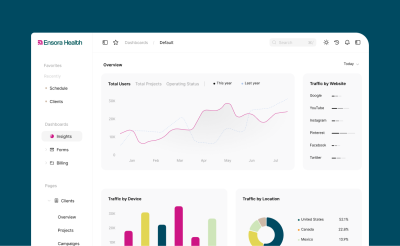Goal setting for mental health clients

Setting goals is common no matter someone’s background, history, or plan for their future. Everyone has things they want to accomplish. Goals help people identify where they see themselves ending up so that they can determine the best path to get there.
If someone has a primary goal of buying a house in 5 years, then they might set smaller, secondary goals of saving a certain amount of money every month to have the money they would need for a down payment.
If someone’s primary goal is to move up in their career, they might work with their boss to set a path of achievable goals to help them get to where they want to be. Those goals might be education, measurable outcomes, or other things that add up to the promotion they want.
Goal setting is not too different in the therapeutic environment. Goal setting for mental health clients can play a huge role in getting them from point A to point B.
What is goal setting in therapy?
As a mental health provider, it’s your job to work with the client to identify areas in their life that they might want to look differently, areas they may want to experience growth, situations they may want to remove themselves from, and dozens of other details while also setting and managing expectations.
Therapy/counseling looks different for every person, but clients often start therapy with the intention of working through something difficult to come out on the other side feeling relief.
Goal setting for mental health clients is the process of working with your clients to set reasonable/achievable goals for one or more of the following reasons:
- Change behaviors – Certain behaviors in an individual’s life could be contributing to their mental state. Goal setting in therapy can help you track, measure, and evaluate behavioral changes throughout the duration of the therapeutic process.
- Establish and maintain healthy relationships – For clients who may have difficulty maintaining relationships or establishing them at all, goal setting can help give clients actionable plans and a great starting point to build from.
- Improve coping skills – For individuals who have trouble coping with any number of things in their life, goal setting can help them form plans to practice and develop new coping skills.
- Enhance decision-making skills – For clients who may struggle with making healthy decisions, or any decisions at all, goal setting can equip them with pathways to facilitate decision-making.
- Development – Everyone, whether in therapy or not, is on a path of personal development. Together, you and your clients can set goals to improve different areas of personal growth that the client wishes to achieve.
Regardless of the reason, goal setting is an effective method to facilitate change in any number of ways that the client wishes to grow.
What does goal setting for mental health clients accomplish?
The accomplishments associated with goal setting will always vary from client to client. Everyone comes to counseling with a different goal in mind. Some individuals do not come with any goal at all, just the knowledge that the way their life is going is not the way they want it to be or that they do not feel good about their current circumstances and are not sure where to start in order to improve them.
Goal setting aims to help clients identify where they would like to end up. Some common examples of goals clients might include:
- Make more friends.
- Manage their anxiety attacks.
- Learn how to communicate with a family member.
- Learn to love themselves more.
- Manage their symptoms of depression.
- Learn how to cope with trauma.
- Learn how to deal with a tough transition.
- They might even say that they just wish to feel better.
No matter the reason, goals can be set to achieve these goals. If a client wants to make more friends, then you both can work together to set actionable goals to help them do that. Reasonable goals might include things like:
- Telling them to talk to one new person this week.
- Suggesting that they join a club at your school that is something they’re interested in.
- Or even role-playing conversations that they might have with people they want to get to know better.
Together, you can work through these actionable steps to accomplish the client’s goal of making new friends. This model can be applied to any number of goals.
Ultimately, goal setting for mental health clients is the process of creating a functional, reasonable, and achievable path toward accomplishing what your client wishes to change in their own life.
TheraNest’s software allows you to take electronic notes and set up treatment plans with goals and objectives to make sure clients stay on the right track. Try it for free today and see why a platform designed for mental and behavioral health providers is the way to go.






